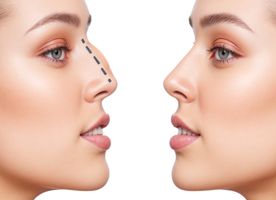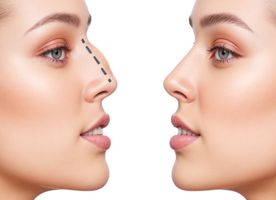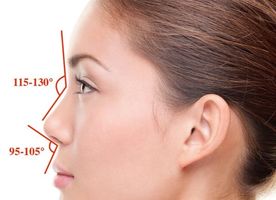Hospital Accreditation of Thailand
Dental Association of Thailand
ISO Certification - International Organization for Standardization
TÜV Rheinland - Technischer Überwachungsverein Rheinland
ESQH - European Society for Quality in Healthcare
ISQua - The International Society for Quality in Health Care
CHKS Healthcare Accreditation
The Leading Dental Centers of The World
Nobel Biocare Fellowship Program
Zimmer Biomet Dental Education Program
EVF - European Venous Forum
EFQM - European Foundation for Quality Management
IDA - International Dental Academy
ICA - International Chiropractors Association
MCA - McTimoney Chiropractic Association
UCA - United Chiropractic Association
ICS - International College of Surgeons
IACD - International Academy of Cosmetic Dermatology
ISDS - International Society for Dermatologic Surgery
EBOPRAS - European Board of Plastic Reconstructive and Aesthetic Surgery
IAAFA - International Academy of Advanced Facial Aesthetics
WALT - World Association for Laser Therapy
ISHRS - International Society of Hair Restoration Surgery
AAHRS - Asian Association of Hair Restoration Surgeons
ESCAD - European Society for Cosmetic and Aesthetic Dermatology
William Glasser Institute - Reality Therapy Certified
EAC - European Association for Counselling
IFSO - International Federation for the Surgery of Obesity and Metabolic Disorde
TÜV SÜD - Technischer Überwachungsverein SÜD
TÜV NORD - Technischer Überwachungsverein NORD
BIOMET 3i Education Program
EURAPS - European Association of Plastic Surgeons
Center of Excellence in Bariatric Surgery
IAOMS - International Association of Oral and Maxillofacial Surgeons
Treatment Abroad Code of Practice
IFFPSS - International Federation of Facial Plastic Surgery Societies
FIGO - International Federation of Gynecology and Obstetrics
IFED - International Federation of Esthetic Dentistry
EOS - European Orthodontic Society
IBMS - International Board of Medicine and Surgery
EAFPS - European Academy of Facial Plastic Surgery
ESCD - European Society of Cosmetic Dentistry
ESCRS - European Society of Cataract and Refractive Surgeons
NASS - North American Spine Society
ESHRE - European Society of Human Reproduction and Embryology
MPS - Medical Protection Society
European Journal of Ophthalmology
ISRS - International Society of Refractive Surgery
JCRS - Journal of Cataract and Refractive Surgery
JPGM - Journal of Postgraduate Medicine
ESPRAS - European Society of Plastic, Reconstructive and Aesthetic Surgery
OSAPS - Oriental Society of Aesthetic Plastic Surgery
RS - The Rhinoplasty Society
FRANZCOG - Fellow of Royal Australian and New Zealand College of Obstetricians a
IFOMPT - International Federation of Orthopaedic Manipulative Physical Therapist
WFO - World Federation of Orthodontists
ITI - International Team for Implantology
ICOI - International Congress of Oral Implantologists
Dentsply Friadent Implant Programme
IMTEC Sendax Mini Dental Implants Systems
IAO - International Association for Orthodontics
AAO - Asian Academy of Osseointegration
WAAAM - World Anti-Aging Academy of Medicine
WOSIAM - World Society Interdisciplinary Anti-Aging Medicine
ESE - European Society of Endodontology
ECAMS - European College of Aesthetic Medicine and Surgery
IABCLL - International Academy of Body Contouring and Laser Lipolysis
IAFGG - International Association of Facial Growth Guidance
IBCS - International Board of Cosmetic Surgery
IMDHA - International Medical and Dental Hypnotherapy Association
EAO - European Association for Osseointegration
ISD - International Society of Dermatology
IFAD - International Federation of Aesthetic Dentistry
IBHRS - International Board of Hair Restoration Specialists
IAHRS - International Alliance of Hair Restoration Surgeons
EDA - European Dental Association
IASP - International Association for the Study of Pain
ADI - Academy of Dentistry International
EAPD - European Academy of Paediatric Dentistry
EACMD - European Academy of Craniomandibular Disorders
ESHRS - European Society of Hair Restoration Surgery
ICD - International College of Dentists Fellowship
UIME - International Union of Aesthetic Medicine
APACS - Asian Pacific Academy of Cosmetic Surgery
McKenzie Institute International
ITEC - International Therapy Examination Council
ICA - International Cranial Association
I-ACT - International Association for Colon Hydrotherapy
CIBTAC - Confederation of International Beauty Therapy and Cosmetology
IFPA - International Federation of Professional Aromatherapists
ISBI - International Society for Burn Injuries
PEFOTS - Pan European Federation of TCM Societies
URHP - Unified Register of Herbal Practitioners
AACD - Asian Academy of Craniomandibular Disorders
IMSA - The International Medical Spa Association
ACHSI - The Australian Council on Healthcare Standards International
CIDESCO - Comité International d'Esthétique et de Cosmétologie
ART - Active Release Techniques
ICPA - International Chiropractic Pediatric Association
CDA - Caribbean Dermatology Association
APAO - Asia Pacific Academy of Ophthalmology
FICCDE - International College of Continuing Dental Education Fellowship
GMC - General Medical Council
ISA - International Sleep Academy
ISCG - International Society of Cosmetogynecology
EPA - European Prosthodontic Association
ABSI - Advanced Body Sculpting Institute
EACMFS - European Association for Cranio-Maxillo-Facial Surgery
FILACP - Federación Ibero Latinoamericana de Cirugía Plástica
REDLARA - Rede Latino-americana de Reprodução Assistida
ALMER - Asociación Latinoamericana de Medicina Reproductiva
ICP - International College of Prosthodontists
EFP - European Federation of Periodontology
IADR - International Association for Dental Research
IODPT - International Organization for Dental Phobia Treatment
Academy of Operative Dentistry
AAP - Asian Academy of Prosthodontics
AsianAOMS - Asian Association of Oral and Maxillofacial Surgeons
ISCD - International Society of Computerized Dentistry - Certified CEREC Trainer
SAAD - Society for the Advancement of Anaesthesia in Dentistry
PFA - Pierre Fauchard Academy
ISCD - International Society of Computerized Dentistry
YDW - Young Dentists Worldwide
APAD - Asia Pacific Academy of Dentistry
ACDNA - Academy Of Computerized Dentistry Of North America
WSLO - World Society of Lingual Orthodontics
HA - Institute of Hospital Quality Improvement and Accreditation
The Dental Council of Thailand
The Dental Association of Thailand
Thai Prosthodontics Association
Thai Society for Laser Dentistry
Medical Council of Thailand
Royal College of Surgeons of Thailand
































































































































































































































